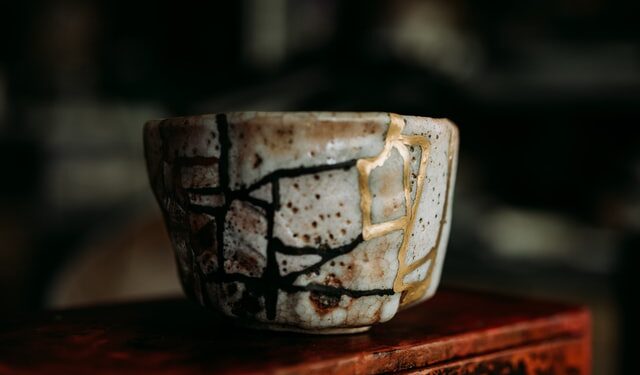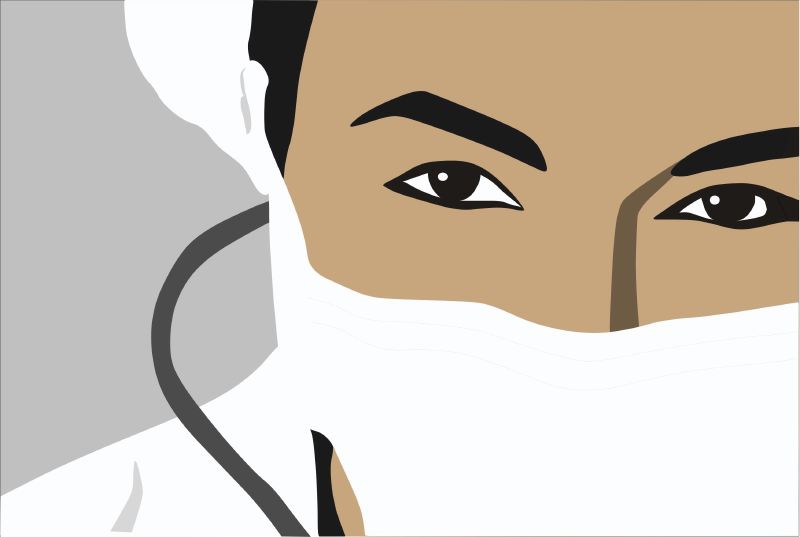
Despite what we know about the poor state of the physicians’ mental health and the appalling personal stories of our fallen comrades, trauma recovery for physicians is possible. For those of us who survive the trauma of medicine, there is indeed the possibility of thriving. Of coming out bigger, stronger, wiser, faster. Physicians rebuilding happier. Post-traumatic growth for physicians is an actual thing.
A Japanese legend tells the story of a mighty shogun warrior who broke his favorite tea bowl and sent it away for repairs. The bowl was held together by unsightly metal staples when he received it back. Although he could still use it, the shogun was disappointed. Still hoping to restore his beloved bowl to its former beauty, he asked a craftsman to find a more elegant solution.
The craftsman wanted to try a new technique that would add to the bowl’s beauty and repair it. So, he mended every crack in the bowl with a lacquer resin mixed with gold. When the tea bowl was returned to the shogun, streaks of gold ran through it, telling its story and enhancing its value and beauty. This repair method became known as kintsugi, which roughly translates to “golden joinery.”
Kintsugi is the Japanese philosophy that the value of an object is not in its beauty but its imperfections and that these imperfections are something to celebrate, not hide. If physicians are brave enough to show our cracks, breaks, and defects, then I believe that we will stronger for it. After trauma recovery comes a possibility of physicians rebuilding happier, where their scars are celebrated and shine brightly like gold.
I stumbled upon an image like the one above when researching trauma recovery. Suffering through trauma has transformative power. Be that in religion, poetry, philosophy, or literature – the general understanding of how pain can be beneficial is not a new concept altogether.
Positive psychology has embraced this process of thriving and calls it Post-Traumatic Growth (PTG) – or the self-development one undergoes after experiencing life challenges. I loved the idea of something broken being reworked and rebuilt into something more valuable. That’s the idea behind post-traumatic growth.
The powerful metaphor of the Kintsugi bowl symbolizes our own inner journeys and the metamorphosis we go through during recovery and the healing process. The breakage of the pottery can represent our most vulnerable life experiences, including our broken heart and spirit after traumatic experiences. Physicians rebuilding happier.
The breakage of the pottery can represent our most vulnerable life experiences, including our broken heart and spirit after traumatic experiences. Physicians rebuilding happier.
I also love that each piece of pottery in Kintsugi is as unique as we are; each has its special breaks, shape, story, and beauty.
While resilience may help to withstand the pain to some extent, post-traumatic growth allows us to grasp the knowledge of using the pain to change our lives for the better.
Suffering through trauma has transformative power. Kintsugi tells us that the value of an object is not in its beauty but its imperfections and that these imperfections are something to celebrate, not hide. Kintsugi is an inspiring metaphor for the possibility of physicians rebuilding happier.
